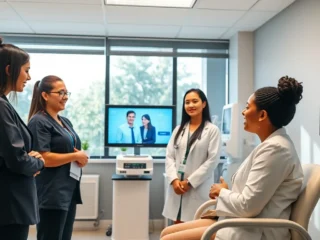
If you’ve been prescribed gabapentin and flexeril, you might be wondering if it’s safe to take them together. In this article, I’ll provide you with the information you need to know about combining these two medications. We’ll explore their individual uses, potential interactions, and any precautions you should take. By the end, you’ll have a clear understanding of whether it’s safe and appropriate to take gabapentin and flexeril together. So, let’s dive in and get the answers you’re looking for.
Combining medications can be a concern, especially when it comes to your health. In this article, I’ll address the question of whether it’s safe to take gabapentin and flexeril together. We’ll take a closer look at each medication, their potential interactions, and any precautions you should be aware of.
Can You Take Gabapentin And Flexeril Together
When it comes to medication, it’s important to understand any potential interactions and precautions. As an expert blogger, I am often asked about the safety of combining specific medications, including gabapentin and flexeril. In this section, I’ll delve into whether these two drugs can be taken together and provide you with the information you need to make an informed decision.
Gabapentin is commonly prescribed to treat nerve pain, seizures, and certain types of anxiety. It works by affecting the chemicals and nerves in the body that are involved in pain and seizures. On the other hand, Flexeril is a muscle relaxant used to relieve muscle spasms and associated pain. It works by blocking nerve impulses to the brain.
While gabapentin and Flexeril serve different purposes, they can be prescribed together in certain situations. However, it’s important to note that there may be potential interactions and precautions to consider. Both medications have the potential to cause drowsiness and dizziness, so combining them may intensify these effects. It is essential to exercise caution and avoid activities that require mental alertness, such as driving or operating machinery, while taking these medications in combination.
It is also important to follow the dosage instructions provided by your healthcare professional. They will consider factors such as your medical history, current medications, and the potential benefits and risks of combining gabapentin and Flexeril. Remember to never adjust your dosage or stop taking any medication without consulting your healthcare provider.
What Is Gabapentin
How Does Gabapentin Work
Gabapentin is a medication that belongs to the class of drugs called anticonvulsants. It is primarily used in the treatment of epilepsy and neuropathic pain. It works by affecting the chemicals in the brain that are involved in the transmission of pain signals.
When taken, gabapentin binds to certain receptors in the brain and spinal cord that are associated with the release of neurotransmitters involved in pain signaling. By doing so, it helps to reduce abnormal electrical activity in the brain, preventing seizures and alleviating neuropathic pain.
Common Uses of Gabapentin
Gabapentin has been approved by the U.S. Food and Drug Administration (FDA) for the treatment of several conditions. Some of the most common uses of gabapentin include:
- Epilepsy: Gabapentin is commonly prescribed as an add-on medication to control seizures in individuals with epilepsy. It helps to reduce the frequency and severity of seizures, allowing people to better manage their condition and improve their overall quality of life.
- Neuropathic pain: Gabapentin is widely used to treat neuropathic pain, which is pain that occurs due to damage or dysfunction of the nerves. It has shown to be effective in conditions such as diabetic neuropathy, postherpetic neuralgia (pain following shingles), and trigeminal neuralgia.
- Restless legs syndrome (RLS): Gabapentin has also been found to be useful in managing the symptoms of RLS, a condition characterized by an irresistible urge to move the legs, often accompanied by discomfort or a tingling sensation. It can help to reduce the frequency and intensity of these sensations, allowing individuals with RLS to experience a more restful sleep.
- Anxiety disorders: While not specifically approved for the treatment of anxiety disorders, gabapentin has shown some efficacy in reducing anxiety symptoms in certain individuals. It can be particularly helpful in individuals with generalized anxiety disorder or social anxiety disorder who have not responded well to other first-line treatments.
It’s important to note that while gabapentin has a range of uses, it should only be taken under the guidance of a healthcare professional. They will determine the appropriate dosage and monitor for any potential side effects or interactions with other medications. Never adjust your dosage or stop taking gabapentin without consulting your healthcare provider.













